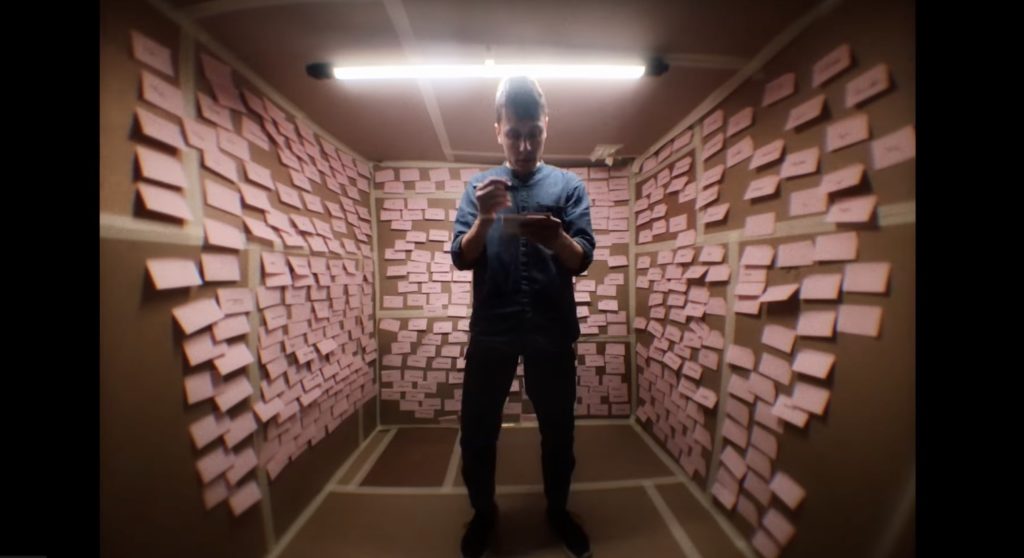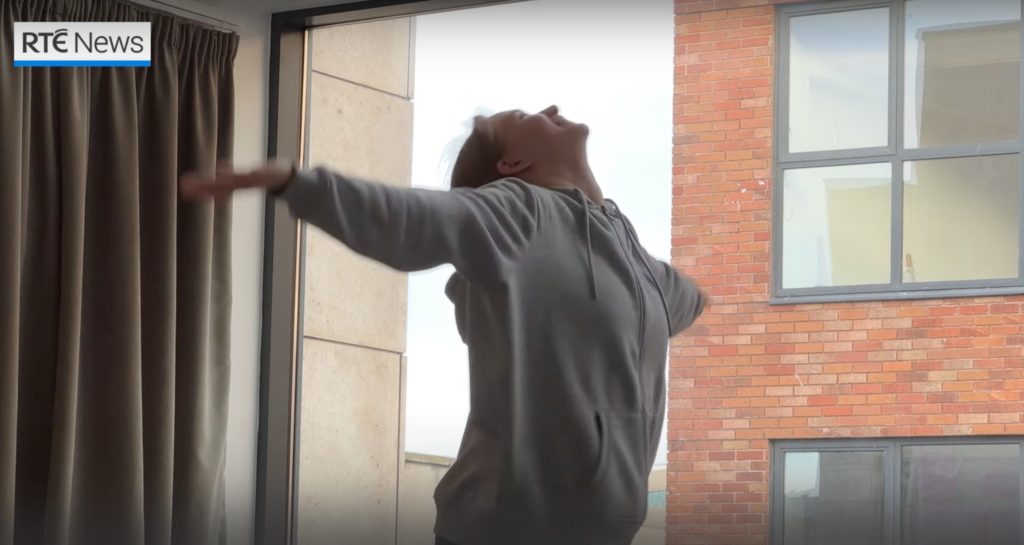We’ve previously featured movies shot under challenging time constraints. But “Identity Theft” is the first film we’ve showcased that was an entry in the LumaFusion editing competition. Entrants had 24 hours to create a short movie that met five requirements:
- Use at least three layers of video to create an effect.
- Use at least three layers of audio to create an effect.
- Make a match cut.
- Include a fade.
- Include a J-cut.
In response to the assignment, D.G. Chichester created “Identity Theft,” a timely and visually riveting piece that won him second prize. An interview with the filmmaker follows.
Interview with D.G. Chichester
MobileMovieMaking: How did you develop your skills as a filmmaker: film school? Online tutorials? On the job training? Trial and error?
D.G. Chichester: I got a film degree from NYU back in the mid-eighties. That was a great program and I learned a lot by working with a great crew. Before that I was a lifelong film fan, and “learned by watching.” After that, the game plan to get into the film biz didn’t work out, but I did spend 13 years editing and writing comic books, and thinking visually in terms of “shots” in creating stories made up of panels and pages. After that, I spent 20 years as a creative director in digital advertising, creating many animated and video productions for the internet, which kept those skills fresh and trained me more to work with different types of assets. (And how to pivot quickly when budgets and deadlines changed.)
MobileMovieMaking: How did you get the idea for “Identify Theft?”
D.G. Chichester: This was a very non-linear process, and it developed in a kind of reverse-engineered way. Since the contest was about certain types of edits — a J Cut, an L-Cut, a match cut — I found myself running through different visualizations that would stand out. I was pressed for time and knew I wouldn’t be able to go out and shoot new footage, so I was also thinking about what I could pull from stock that would make a visual impact. The match cut struck me as the most dramatic, and as I spun through ideas for something that would stand out the spinning gun cylinder came to mind. Once I had that image, I began to think of other elements that would spin as a match — a windmill, a dynamo, a whirling dancer from overhead. When the safe dial jumped into my head, I knew I had both a solid and interesting cut. But it also got me thinking…who would have the need to crack a safe, and use a gun. Some sort of criminal…some kind of thief…I just kept following the thread and let the story create itself from there.
MobileMovieMaking: How did you plan the edit?
D.G. Chichester: The edit started as described from above, but then I continued to improvise. I showed a gun…so I had to fire it. So I found shots of that, and then had to edit in the barrel flashes. I had begun to consider this “character” to be something about stealing or investigating identities…so that led to the surveillance shots. The couple “bookend” came last when I felt like the hardcore assassin was too straightforward, and that by starting it off as a “cute meet” I could then surprise the audience by putting a twist on the typical “getting to know each other” angle. (Hopefully surprise more than confuse!) With the shots in mind I then went back and wrote the narration to pull things together.
MobileMovieMaking: How long did the edit take? Could you say something about the soundtrack?
D.G. Chichester: I had put the contest off too long, so I had only about a day to complete everything. I would say from start to finish it was probably about 12-16 hours. The first section was a bit staggered, but became committed time as I had to get it in under the deadline.
MobileMovieMaking: Could you say something about the soundtrack?
D.G. Chichester: With the picture locked I then backed my way into the soundtrack, finding the small pieces of sound effects (the gun click, the coffee stirring) that would trigger solid ambience or direct effect for the scenes or shot. I then leveraged a music collection I have a subscription to in order to find the 2 main music pieces that would bridge the “twist” in the story: a chill “date in the city” vibe countered against rising menace at the end.
MobileMovieMaking: During the editing, did you encounter any unexpected problems?
D.G. Chichester: Considering the fact I had backed myself into a corner time-wise, everything went surprisingly smooth! If there was a “problem” it was the limits of working with stock footage. Even though the storyblocks library that is available with Lumafusion is pretty extensive, it’s never the “perfect” shot. So the gun cylinder didn’t match the safe dial exactly, and I had to manipulate the angle on that with some rotation and a flip. And when the sequence felt a little “flat” I then took the crop on the shot and created a second “shot” by cutting in tighter. I think that when you start to think about your ability to manipulate the footage in this way you end up with many more options.
MobileMovieMaking: Had you used LumaFusion before?
D.G. Chichester: Yes, I’ve been using Lumafusion since it was Pinnacle Studio. I’m thrilled to see how it’s developed since the team took it over from there. It’s really an incredible app, totally intuitive and insanely powerful — not just because it’s on a mobile device, but just overall. I miss some of the additional features of Final Cut when I’m working in LumaFusion instead, but I am finding that I prefer it more and more — it’s great to be on the go and with the touch interface to feel more “hands on” with the edit. (Maybe because I learned editing actually manipulating pieces of film on an upright!)
MobileMovieMaking: Anything else you’d like to share about editing?
D.G. Chichester: Coming from a time when you had to reserve gear and editing equipment, I think it’s so incredibly exciting to carry an entire movie studio in your pocket. I encourage everyone who’s ever had an idea to just get started. An app like Lumafusion makes it so easy to just jump in. It doesn’t have to be perfect on the first go, in fact it’s more interesting if it’s not! Because then you get to work on it — whether it is stock, or original footage — in the edit. And the edit is where you get to change things up, refine things, and ultimately create something that’s both fun for the audience — and yourself.
MobileMovieMaking: Have you got a new project underway?
D.G. Chichester: I’m taking two audio dramas I created, called “The Cryptic” and recreating them as videos. They each have a paranormal theme, a little Twilight Zone, a little “In Search Of.” I’m keeping the original soundtrack but will be editing that to video and animation to bring things to a whole new level.
MobileMovieMaking: What’s the best way for people to keep up with you and your work?
D.G. Chichester: Folks can find me on Twitter, and I have a weekly newsletter: “Into the Storymaze.”
# # #
The editors of MobileMovieMaking have chosen “Identity Theft” as the Mobile Movie of the Week.”



 Previous post
Previous post
 Next post
Next post





